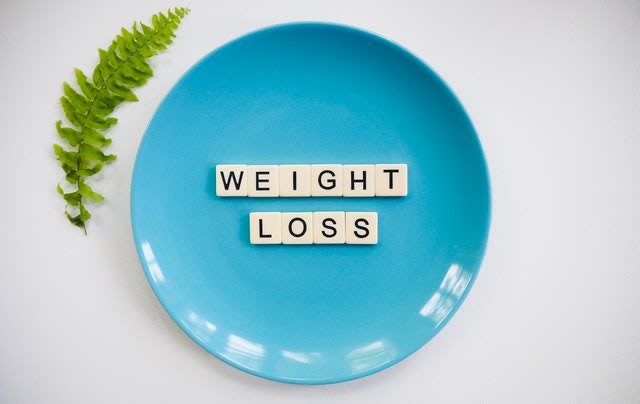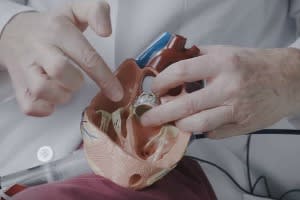Is Vaping Safe? Spoiler Alert... No.
Published: October 21, 2019l
By Paul Sachs, MD, Director of Pulmonary Medicine and Pulmonary Rehabilitation
E-cigarette fact: conventional cigarette use by teens has decreased nationwide, but use of electronic cigarettes or “vaping” continues to increase dramatically.
Our program is covered by most insurance plans.
Electronic cigarettes, or e-cigarettes, entered the U.S. marketplace over 10 years ago, and since 2014, they have become the most commonly used tobacco product among U.S. youth, reaching epidemic levels according to a 2016 US Surgeon General's report. Adolescents are now more likely to vape than to smoke cigarettes and the numbers are growing: last year, more than 3.6 million middle and high school students used e-cigarettes within a 30-day period; that's 20% of high school students and 6% of 8th graders!
The numbers are not only astonishing, they are frightening, considering the serious health consequences of vaping e-cigarettes. As a pulmonologist, I've seen the worst that smoking cigarettes and vaping can do to adults and to youth. As director of the Commit to Quit smoking cessation program at Stamford Health, I've been out in the community talking to parents and educators not only about the dangers of teen vaping but also teaching them how to identify e-cigarette devices. Here are a few important considerations:
1. Looks aren't everything. While some vaping devices look like plastic cigarettes or ordinary pens, others feature high-tech designs that intrigue adolescents. The popular electronic cigarette company Juul, for example, looks like a thumb drive, can be easily concealed, and can be charged using a computer USB port.
2. Beware of the e-cigarette flavors. E-cigarettes are marketed to younger consumers by advertising flavorings such as Mint, Cotton Candy, Gummy Bear, and Skittles. Though these flavors sound harmless, most young vapers are under the big misconception that e-cigarettes are “safe” when in fact, they have no idea that there are dangerous chemicals contained in these devices.
3. It's not just water vapor. As a community, we all need to understand that the vapor being inhaled is not harmless. Liquid nicotine and a combination of other toxic chemicals are inhaled with every puff. The nicotine is highly addictive and is particularly harmful to the developing brains of adolescents.
4. A potential gateway habit. There is also evidence that vaping may lead to conventional cigarette use. A recent study showed that e-cigarette users were four times more likely to start smoking regular cigarettes than adolescents not using e-cigarettes.
Quitting smoking or quitting vaping is not easy. Our smoking cessation program at Stamford Health was originally designed for adults who smoke conventional cigarettes. A sign that this epidemic is a problem for our community is that we are now responding to calls from parents of teens as young as 14 years old who are asking for our help. For those interested, the program can be reached at 203-276-QUIT. Our nicotine cessation counselors and clinical staff will meet with the child and parent, using a team approach to tackle the problem of nicotine addiction.
E-cigarette fact: conventional cigarette use by teens has decreased nationwide, but use of electronic cigarettes or “vaping” continues to increase dramatically.
Ready to Quit?
If you are ready to stop smoking or vaping e-cigarettes, call 203.276.QUIT.Our program is covered by most insurance plans.
The numbers are not only astonishing, they are frightening, considering the serious health consequences of vaping e-cigarettes. As a pulmonologist, I've seen the worst that smoking cigarettes and vaping can do to adults and to youth. As director of the Commit to Quit smoking cessation program at Stamford Health, I've been out in the community talking to parents and educators not only about the dangers of teen vaping but also teaching them how to identify e-cigarette devices. Here are a few important considerations:
1. Looks aren't everything. While some vaping devices look like plastic cigarettes or ordinary pens, others feature high-tech designs that intrigue adolescents. The popular electronic cigarette company Juul, for example, looks like a thumb drive, can be easily concealed, and can be charged using a computer USB port.
2. Beware of the e-cigarette flavors. E-cigarettes are marketed to younger consumers by advertising flavorings such as Mint, Cotton Candy, Gummy Bear, and Skittles. Though these flavors sound harmless, most young vapers are under the big misconception that e-cigarettes are “safe” when in fact, they have no idea that there are dangerous chemicals contained in these devices.
3. It's not just water vapor. As a community, we all need to understand that the vapor being inhaled is not harmless. Liquid nicotine and a combination of other toxic chemicals are inhaled with every puff. The nicotine is highly addictive and is particularly harmful to the developing brains of adolescents.
4. A potential gateway habit. There is also evidence that vaping may lead to conventional cigarette use. A recent study showed that e-cigarette users were four times more likely to start smoking regular cigarettes than adolescents not using e-cigarettes.
Quitting smoking or quitting vaping is not easy. Our smoking cessation program at Stamford Health was originally designed for adults who smoke conventional cigarettes. A sign that this epidemic is a problem for our community is that we are now responding to calls from parents of teens as young as 14 years old who are asking for our help. For those interested, the program can be reached at 203-276-QUIT. Our nicotine cessation counselors and clinical staff will meet with the child and parent, using a team approach to tackle the problem of nicotine addiction.
Featured Expert/ Author































































